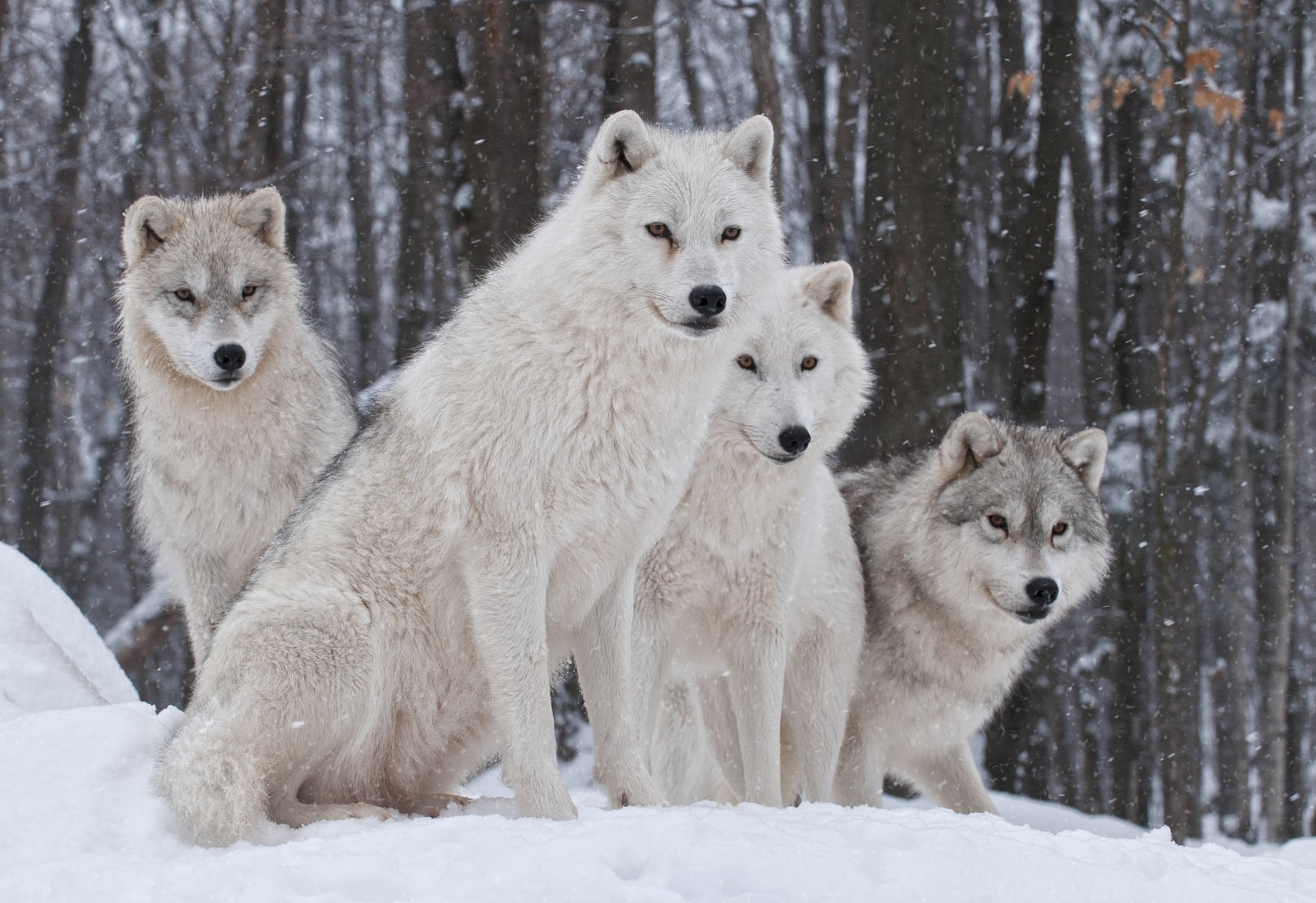Arctic Wolf
"Moon Bathing" by Chihiro Howe (Copic markers)
“I never really lived in an area that had a lot of snow, so I always liked the idea of it. So, I love animals that live in a snowy environment (like the polar bears and the Siberian tigers from the other two pieces I did). Wolves have always fascinated me, so I really enjoyed working on this piece.”
Your purchase is helping Expedition Art and Saving Species purchase land in Sumatra! Learn more about the project.
The Arctic Wolf is often called the "polar wolf" or "white wolf".
Habitat
Arctic wolves inhabit the northernmost regions of North America and are found primarily in Alaska, though they have been sighted as far south as the border of Minnesota and Canada. They are also packs of Arctic wolves in Canada and Greenland, though these populations are more at-risk than those in the inhabitable areas of Alaska.
Family Life
Normally, only the alpha male and female Arctic wolves breed; however, in large packs others may breed as well. Due to permafrost soil and the difficulty it poses for digging, Arctic wolves often use rock outcroppings, caves or even shallow depressions for their dens. The mother gives birth to two or three pups in late May to early June, about a month later than grey wolves. The lower number of pups—compared to the average of four to five among grey wolves—is attributed to the lack of prey in their environment. Female Arctic wolves have a gestation period of about 63 days and the wolf pups stay with their mother for two years.
Lifespan
The arctic wolf has a lifespan of 7-10 years.
Hunting Habits/Diet
Arctic wolves hunt their prey in packs. While they prefer caribou and musk oxen, when these animals are scarce, they will settle for Arctic hare, seal, ptarmigan and lemmings, among other small animals. Surprisingly, moose are also a likely target for Arctic wolves; even though they are much bigger, their long legs leave them susceptible to getting stuck in thick snow. They will traverse areas up to and beyond 1,000 square miles when their prey is scarce due to limited available roughage.
Population
While the Arctic wolf has not been designated an official IUCN status, as it is considered
a subspecies of the grey wolf, their population has been in decline in Canada and Greenland.
Why Are They Endangered?
Due to their propensity to remain in uninhabited and inhabitable areas, the Arctic wolf does not come into contact with humans most of the time. The threat of being hunted is therefore low compared to other subspecies of the grey wolf. Climate change poses a great threat to Arctic wolves because of its effect on their food supply. Industrial development in areas of Canada and Greenland is especially problematic for the survival of the Arctic wolves that live in these regions.
Status
Least Concern


